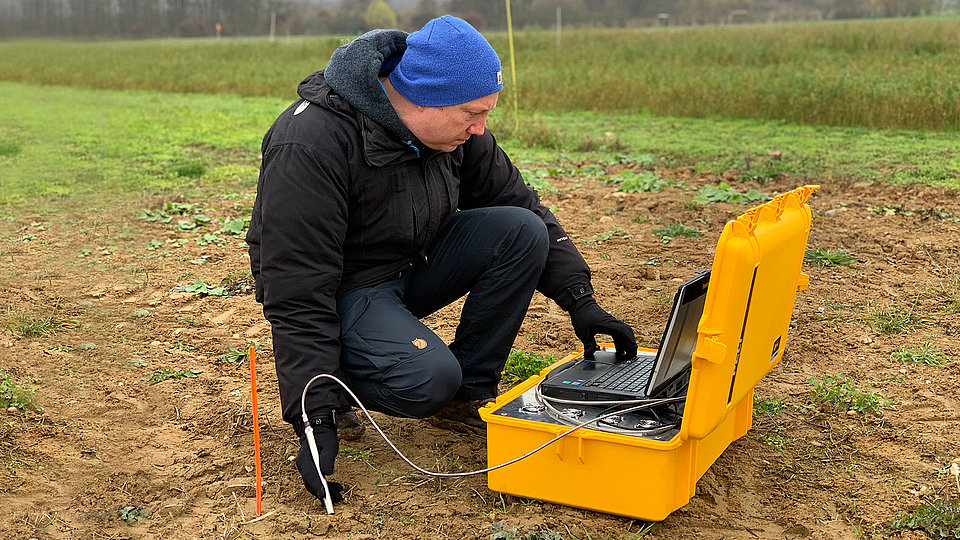Laser Sensors Lab
At FBH, we develop diode lasers that are specially tailored to applications in sensor technology and analytics. They are based on spectrally narrowband diode lasers and wavelength-stabilized light sources. Applications include Raman, fluorescence and absorption spectroscopy. The diode lasers can also be used as seed lasers for high power lasers, for example for LiDAR systems.
The developments at our institute cover the entire value chain, from the diode laser to the light source to the measurement system and application examples.
Shifted Excitation Raman Differenz Spektroskopie
Shifted Excitation Raman Difference Spectroscopy (SERDS) is a powerful and easy-to-use type of Raman spectroscopy. It allows the separation of Raman signals from typical background interferences and thus allows applications outside the classical laboratory measurement environment, e.g. in real on-site measurements. This requires excitation light sources with two individually addressable emission wavelengths. These are tailor-made and developed at FBH. The spectral spacing should correspond to the spectral width of the Raman signal of the target analyte (e.g. 10 cm-1 for liquid and solid samples). The sample is excited with both emission wavelengths one after the other. In the process, the Raman signal also shifts with the spectral distance of the light source. Interfering background influences such as fluorescence and ambient light, however, remain unchanged. The subtraction of the two Raman spectra thus results in a SERDS spectrum in which the Raman signal is separated from the interfering background influences.
Dual wavelength laser for THz spectroscopy
The dual-wavelength diode lasers developed at FBH are based on spatially separated laser cavities with internal wavelength stabilization at different wavelengths and a common emission facet. Separate contacts allow the lasers to be used in both single and parallel mode. The latter is used, for example, for the generation of THz radiation. By means of implemented grating heaters, the spectral spacing of both wavelengths and thus the THz frequency generated can be freely adjusted. In the application this effect can be used for THz spectroscopy.
Tunable lasers for absorption spectroscopy
Wavelength-tunable diode lasers enable the qualitative and quantitative detection of a wide range of substances and environmentally relevant gases. Individual target substances, such as water vapor and oxygen, also exhibit sufficient line strengths in the visible to near-infrared spectral range for atmospheric gas detection. For absorption measurements under ambient conditions, narrow-band diode lasers tunable in wavelength are specifically developed at FBH and can be qualitatively investigated directly. For this purpose, light from the lasers is coupled into an integrating sphere or gas cell, scattered several times and then detected by a photodiode. The simple and robust setup enables, among other things, the measurement of water vapor concentrations or high-resolution measurements of combination rotational vibration bands.
Current applications
- Development of flexibly operable diode lasers for multimodal spectroscopic analyses.
- Laboratory and in situ examination of samples in fields of application such as safety, biology, medicine, food safety, pharmaceutical industry and agriculture.
- Dual-wavelength diode laser for SERDS application in confocal Raman microscopy.
